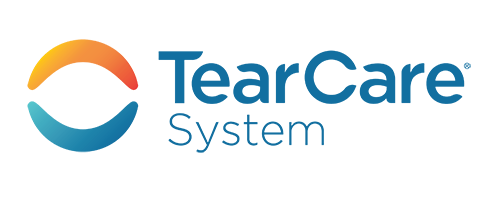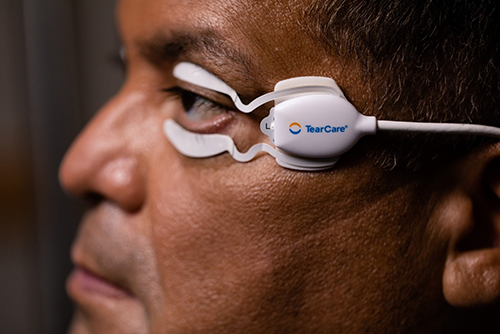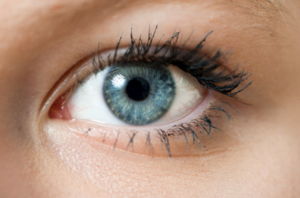![]() Take the Next Step. Request a Surgical Consultation.
Take the Next Step. Request a Surgical Consultation.
Our Dry Eye Treatment Approach
Like other chronic conditions, such as high blood pressure and diabetes, dry eye may affect your eyes and eyelids long before you experience noticeable symptoms. It is important to detect and diagnose dry eye early so that we can start managing this chronic condition to preserve your eye health, and vision and prevent chronic eye pain.
As a Dry Eye Center of Excellence, our EyeDry Center led by Dr. Sandra Lora Cremers along with Dr. Alexa Pereira, with Visionary Eye Doctors remains the dry eye specialist at the forefront of research and technology for the management of dry eye. Our doctors pursue continued training and education so we can offer the best care to our patients. Treatment plans are customized and often multi-faceted, incorporating various clinical therapies as well as at-home care.
We have at our disposal all of the best tools for diagnosis and treatment, and we understand when, how and in what combination to use them.
End Dry Eye with our High-Tech, Experienced Eyecare Treatments
The treatment of dry eye depends on the cause and may be a multi-pronged, multi-layered approach to address the underlying cause(s). If you have severe dry eye, Dr. Cremers is one of the few physicians in the country to provide pioneering and cutting-edge approaches to treating Severe Dry Eye Syndrome due to MGD. Dr. Cremers employs a Step Ladder approach which is individualized and personalized to you and your treatment needs, budget, and goals.
Environmental Modification
If you experience dry eyes, pay attention to the situations that are most likely to cause your symptoms. Then find ways to avoid those situations to prevent your dry eye symptoms. For instance:
- Avoid air blowing in your eyes. Don’t direct hair dryers, car heaters, air conditioners, or fans toward your eyes.
- Wear glasses on windy days and goggles while swimming. The wraparound style of glasses may help reduce the effects of the wind. Goggles protect your eyes from chemicals in pool water that can dry your eyes.
- Add moisture to the air. In winter, a humidifier can add moisture to dry indoor air.
- Consider eyeglass shields to protect your eyes. Safety shields can be added to the tops and sides of eyeglasses to block wind and dry air from getting to your eyes. Ask about shields where you buy your eyeglasses.
- Take eye breaks during long tasks. If you’re reading or doing another task that requires visual concentration, take periodic eye breaks. Close your eyes for a few minutes. Or blink repeatedly for a few seconds to help spread your tears evenly over your eye.
- Position your computer screen below eye level. If your computer screen is above eye level, you’ll open your eyes wider to view the screen. Position your computer screen below eye level. This may help slow the evaporation of your tears between eye blinks.
- If you smoke, please stop and avoid smoke. Ask your doctor for help devising a quit-smoking strategy that’s most likely to work for you.
Lubricants
The simplest and most common treatment for dry eye is the use of artificial tears or lubricating agents to supplement your natural tear production. We make very specific recommendations for artificial tears based on the results of your dry eye tests, and we offer all of the best products at our office.
- Over-the-counter tear drops. Many brands are available at local pharmacies and grocery stores for the treatment of DES. Your doctor can review which brands may be more effective for you. Generally, preservative-free eye drops, in twist-off vials, are better tolerated if topical lubricants are needed frequently. Depending on symptoms, drops may need to be used more frequently. Some people need to put drops in every hour, and some need eyedrops only once a day.
- Over-the-counter gels and ointments. These are thicker lubricants that come in a tube, mainly to be applied right before going to sleep. They moisturize the eyes overnight and may be helpful for someone waking up with eye discomfort.
- Prescription lubricants. Some prescription lubricants may be more effective than over-the-counter lubricants.
- Serum Tears and Platelet-enriched Plasma. For severe cases of DES unresponsive to artificial tears or medications, a patient’s own blood can be drawn to be used as a natural eye drop. A centrifuge, under a sterile technique, is used to separate the red and white blood cells from the fluid in the blood. The fluid, or serum, is extracted and mixed with saline to create a 20% Serum tear solution. The serum contains proteins, oils, growth factors, anti-inflammatory agents, and other ver-the-counter tear drops. Many brands are available at local pharmacies and grocery stores for the treatment of DES. Your doctor can review which brands may be more effective for you. Generally, preservative-free eye drops, in twist-off vials, are better tolerated if topical lubricants are needed frequently. Depending on symptoms, drops may need to be used more frequently. Some people need to put drops in every hour, and some need eyedrops only once a day.
Medications
- Antibiotics. Antibiotics can decrease the amount of bacteria on the surface of the eye, can open up the pores of tear glands, and can help reduce eye inflammation. These are available in drop, ointment, and pill forms.
- Anti-inflammatory Agents. These can be used to control eye irritation and inflammation from chronic DES. Steroid and non-steroidal drops can be used to treat acute symptoms of redness and burning. Topical cyclosporine (Restasis) can be used on a long-term basis, including in patients with autoimmune conditions or after LASIK, to promote increased tear production by glands on the surface of the eye.
- Lacrisert. For patients with severe dry eyes, a tiny insert (hydroxypropyl cellulose) the size of a grain of rice can be placed between your lower eyelid and the eyeball. The insert dissolves during the day, slowly releasing a lubricant onto the surface of the eye.
In-Center Treatment of Dry Eyes
TearCare

TearCare is a revolutionary new product to treat patients with evaporative dry eye disease due to meibomian gland dysfunction (MGD). TearCare uses localized heat therapy to express these eyelid glands, which can help unblock them and restore their natural function while stabilizing the tear film.
At Visionary Eye Doctors, many members of our team are well-versed in using TearCare, including Dr. Cremers, M.D., who is an experienced researcher and clinician in dry eye treatment. Our optometrists are also experienced in using TearCare to treat their dry eye patients, including Babak Hosseini, OD, Maliha Saeed, OD, Lorena Riveros, OD, and Alexa Pereira, OD.
How Does TearCare Work?
TearCare works by applying gentle heat to the eyelids to remove any blockages in the meibomian glands associated with meibomian gland dysfunction. The dry eye treatment uses targeted and adjustable thermal energy to improve the function of the meibomian glands.
TearCare is different from other treatments because it’s a personalized open-eye experience. Unlike other dry eye treatment methods, your eyes will stay open and blinking while you undergo your TearCare treatment.
Using SmartLids and the SmartHub, the TearCare System harnesses the power of your natural blink. Each treatment is customized to the patient because the SmartLids comfortably fit your unique, one-of-a-kind eye shape.
The SmartLids are placed on your upper and lower eyelids. They conform to your eyes while remaining comfortable through the procedure.
TearCare’s SmartHub uses sensor-driven feedback to deliver safe and consistent heat to break down blockages in the meibomian glands that cause dry eye symptoms. After applying heat to your eyelids, your eye doctor at Visionary Eye Doctors will clear any blocked meibomian glands.
The process is incredibly gentle and helps provide the dry eye relief you need and meibomian gland dysfunction.

Am I a Good Candidate for TearCare?
TearCare is an excellent treatment option for patients with
dry eyes, blepharitis, or meibomian gland dysfunction. You may be a good candidate for TearCare if the following applies:
- You’re at least 22 years old
- You’re comfortable waiting an hour to wear contact lenses after undergoing a TearCare treatment
- You don’t have any ocular surface diseases like corneal dystrophy
- You have dry eyes, meibomian gland dysfunction, or blepharitis and are looking for lasting relief
Additional Dry Eye Treatments
- Closure of the Tear Drain: Punctal Plugs. Normally tears drain through a canal in the inner corner of each eyelid into the sinuses and nose. This is why tears don’t normally spill down the cheek. Tiny silicone plugs or surgical cautery can be used to block the tear ducts, allowing the tears to remain in contact with the eyes longer. Plug insertion is an easy, reversible procedure that can be performed in the examination room and is usually covered by medical insurance.
- Bandage Contact Lens: If the eye is too dry, a soft, clear bandage contact lens can be applied to protect the surface of the eye. Similarly, eye goggles can be worn at night time.
- Lipiflow®: This unique 15-minute system combines visual imaging to diagnose a patient’s dry eye syndrome with a treatment that applies painless heat and compression to unclog the Meibomian glands. LipiView is the digital imaging component that allows your ophthalmologist to measure the lipid layer of your tear film. Until the development of LipiView, ophthalmologists did not have a way to visually show that patients were lipid deficient.
LipiView only takes a few minutes to evaluate your eyes. You will simply look into a camera and blink normally. A special light, camera, and computer program do everything else. Then your doctor will be able to determine the best therapy.
Watch Sandra Lora Cremers, MD, FACS Get LipiFlow Treatment for Dry Eye and MGD
If you are diagnosed with dry eye syndrome secondary to meibomian gland dysfunction, you can then undergo a 12-minute LipiFlow treatment. This uses a single-use eyepiece to relieve blockage of all the meibomian glands, both upper and lower. The treatment sensation has been compared to an eyelid twitch or gentle pulsation.
After a treatment, the glands become unclogged and in 2 to 6 weeks you should see a noticeable difference in your dry eye symptoms.
- Prokera™. Prokera is a biologic corneal bandage that has natural therapeutic actions known to heal the eye faster with less pain, scarring, and inflammation. It promotes healing in our Chronic Dry Eye patients, as well as others with corneal diseases or injuries. It is easily inserted and removed and sometimes can be used on one or both eyes multiple times depending on our patient’s needs.
- IPL Treatment. Intense Pulsed Light (IPL) treatment for Dry Eye was first discovered over 10 years ago when patients with Rosacea, who also had various ocular conditions, would come in for IPL therapy to have their facial redness treated. These same patients would later return for their follow-up visits reporting that while the redness in their skin had improved, they had also seen improvements in their vision. After further research, it was learned that light therapy from IPL improves lid margins, meibomian gland function (the oily layer that prevents evaporation of the eye’s tear film), and tear breakup time. This is ideal for those who suffer from Dry Eye disease as the light acts as a warm compress that liquefies the oily secretions from the meibomian glands and “unplugs” them, allowing them to function properly.IPL therapy for dry eye provides long-term improvement of symptoms. For the best results, we recommend patients have 5 treatments, scheduled one month apart. There is no downtime and any mild redness that may appear in the skin post-treatment will disappear within a couple of hours. Schedule a consultation today!
Check out Dr. Cremer’s podcast The Eye Show
- Intraductal Meibomian Gland Probing and Expression (MGPE). This in-office procedure addresses the root cause of gland dysfunction from within the gland itself. This assists in removing obstructions or scar tissue within the duct and relieves symptoms of chronic obstructive Meibomian gland dysfunction. Using a lidocaine cream to anesthetize the area where a 1mm cannula or probe will be inserted in the eyelid to enter as many Meibomian glands as possible of the upper and lower lids as indicated to try to open up any scar tissue, remove any obstructions and try to stimulate more oil gland production. Often, a one-time session on all four lids can provide dramatic and immediate relief to patients. In some cases, instantaneously and permanently for those patients who may not have an autoimmune disease. Some patients may need additional probing sessions.
- Platelet Rich Plasma (PRP) injection to Meibomian Glands. Clinical Study. The use of the patient’s own (autologous) platelet-rich plasma injected into the Meibomian Gland(s) to improve the gland(s) structure and potential overall functionality.
- PRP Injection to Lacrimal Glands. Clinical Study. The use of the patient’s own (autologous) platelet-rich plasma injected into the Lacrimal Glands to improve the gland(s) structure and potential overall functionality.
- PRP Eye Drops or Auto Serum Drops. Using the patient’s platelet-rich plasma in the form of topical eye drops promotes healing in the treatment of dry eye disease by improving tear stability and ocular surface health and comfort.


